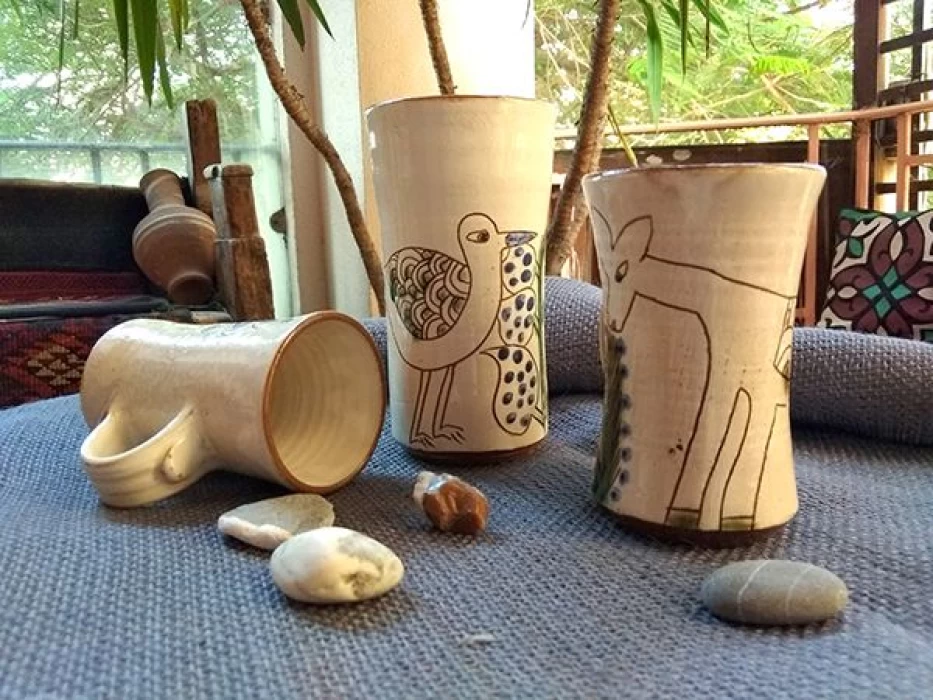
The Potter in ancient Egypt
The Potter in ancient Egypt
It is understood that the ancient Egyptians were very good in shaping molded pots and making them suitable for carrying many of the utensils that he or she used in their daily activities, also because, for those times, this is one of the primary skills that mankind possessed because the raw materials were abundant, thanks to the silt from the Nile.
Egyptians made utensils for clay, molding containers, and cups in their everyday life, at the same time they used clay pottery to craft masarajs, which were tools for illuminating places. A masaraj is an oil-containing flat pot with a sprinkle of salt, with a wick resting atop the salt. Incipient phase of this kind of masaraj production was hand-made, and the nozzle was not employed in designing the forepart of masaraj. Some masarajs were also decorated with glaze at times, prior to its use, or re-uses.
In addition to the use of pottery in religious rituals and funerary objects, the ancient Egyptians were able to diversify in its various forms, components and decorations, which began to evolve with the development of ancient Egyptian civilization throughout the ancient Egyptian ages. According to the Tel Basta Museum, the formation of pottery comes from the Nile silt, which is chemically composed of several elements such as iron, alkali, sand, organic matter, calcium carbonate and water.
The ancient Egyptian first purified the clay from impurities by soaking it in water until the impurities floated to the surface, then added to the clay a little hay or dung to increase its cohesion, then left it to ferment for several days, then started forming either by hand, using the wheel or using the mold, then dried and burned.
Not only were the Ancient Egyptians skilled in the art of pottery but they also arranged decorative elements on pots and the arrangement of pots themselves underwent various changes during the long epoch that the Ancient Egyptians occupied that geographical space. They covered the surfaces with various embellishments such as patterns, heads and limbs of beings, vegetation and sceneries exemplified by stars, rivers and lakes, and painted them in shades that make the exhibits pleasing to the eye and appealing to the ancient Egyptian culture.
In case you have an interest in pottery and ancient Egyptian objects, you can help yourself and make a visit to the Tel Basta Museum in Sharqia, since it contains many such antique items along with several pottery models exhibiting Egyptian civilization.















